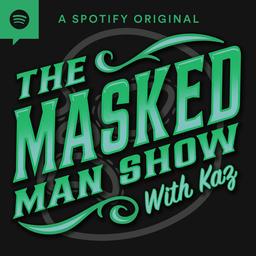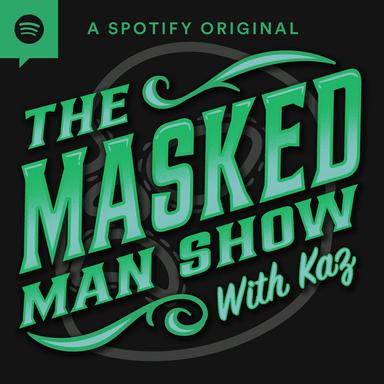After four decades of not having any secondary women’s championships on their main-roster shows, WWE currently has two tournaments underway to crown both the Women’s United States and Intercontinental champions. The United States Championship tournament final will take place this Saturday during the return of Saturday Night’s Main Event on NBC.
Professional wrestling has a long history of using tournaments to debut new championships. One of the most famous examples was the WWE (then WWF) Intercontinental Championship being won by Pat Patterson in September of 1979 during a tournament (that never even happened) in Rio de Janeiro, Brazil—a country with a fascinating pro wrestling history, but a country the WWF never ran—that saw Patterson unify his North American Heavyweight Championship with the South American Championship. That title unification created a championship that eventually became WWE’s working-man's title, with a list of former holders featuring some of the best in the business: “Macho Man” Randy Savage, Bret Hart, Shawn Michaels, Razor Ramon, and more.
Looking back at some of the more fascinating title tournaments over the years can often showcase what the promotion was trying to do at the time. For example, it appears that WWE is invested in strengthening the women’s divisions on their main roster. In the spirit of potentially shifting a piece of the pro wrestling landscape, here is a look at five standout championship tournaments.
NWA World Tag Team Championship tournament (1992)
This was a tournament to crown new NWA tag team champions (which were separate from the WCW Tag Team Championship that the Steiner Brothers held after WCW split from the NWA in January 1991). The opening round (and one quarterfinal) took place at Clash of the Champions XIX on June 16, 1992 (airing on June 22, 1992), with the remaining matches occurring a month later at the Great American Bash. The field featured a fascinating mix of established WCW teams, including two pairs from the Dangerous Alliance faction (Arn Anderson and Bobby Eaton, in addition to Steve Austin and Ric Rude), the Freebirds, the Steiners, plus Dustin Rhodes and Barry Windham, makeshift teams like Jushin Liger and Brian Pillman, and Nikita Koloff and Ricky Steamboat, as well as international teams like the Malenko Brothers (Joe and Dean, years before Dean’s more memorable stint in WCW). The tournament also featured the Miracle Violence Connection, a team made up of former Freebirds member Terry “Bam Bam” Gordy and “Dr. Death” Steve Williams that had a successful run in All Japan Pro Wrestling and was set to get a huge push from Bill Watts, who was booking WCW at the time. Watts had built his previous promotion, the Universal Wrestling Federation, around both guys (Gordy was the first UWF Heavyweight champion, and Williams was the last).
The main event of the Clash of the Champions portion of the tournament featured a heavyweight dream match between four absolute monsters. Gordy and Williams (who eventually won this tournament) were the biggest American tag team in All Japan, and the Steiners played the same role in New Japan Pro-Wrestling, making this a match that hardcore fans thought they would never see due to the politics of the industry. And to the surprise of absolutely no one, they worked perfectly together. Both teams were just hurling each other across the ring, while also including some very impressive amateur wrestling (Williams and both Steiners were accomplished collegiate wrestlers, while Gordy started his pro wrestling career at 13). This was really a distillation of Watts’s short-lived vision for WCW.
NOAH Global Honored Crown Championship tournament (2001)
The death of legendary All Japan cofounder Giant Baba in January of 1999 led to a schism in that promotion, with his widow Motoko Baba on one side as owner, and company president Mitsuharu Misawa on the other. Misawa, who was not happy with Motoko Baba’s vision for All Japan, took most of the wrestlers from All Japan with him in 2000 and formed a new promotion, Pro Wrestling NOAH (likening his new promotion to Noah’s Ark). In 2001, NOAH ran a 16-man elimination tournament to crown the first Global Honored Crown (GHC) champion. The tournament featured a mix of native stars who had come over from All Japan, like Jun Akiyama, Akira Taue, and Misawa, along with American stars like Vader and Too Cold Scorpio.
In the tournament final, Misawa took on Yoshihiro Takayama, who started his career in the UWF International shoot-style promotion before joining All Japan after UWFi folded in 1996. In the very hierarchical culture of Japanese pro wrestling, Takayma was an outsider facing the All Japan original and NOAH founder Misawa. At 6-foot-5 and around 280 pounds, Takayama towered over Misawa, which gave this match a David-vs.-Goliath vibe, a stark contrast from most Misawa matches. It was brutal stuff, with Takayama thumping Misawa with hard shots, and Misawa firing back with the ultimate slingshot, his famous elbow strikes. At one point Misawa even ends up bleeding from the ear, which shows you how hard he was getting hit, as NOAH was a promotion that didn’t use razor blades to get color. This was an effective minimalist battle from a promotion built on maximalism.
Ring of Honor World Championship tournament (2002)
Ring of Honor was launched with a unique strategy in 2002. After ECW went out of business, RF Video (who was distributing ECW releases) decided to start a wrestling promotion, signing the brightest talents from the nascent indie wrestling scene and focusing on must-see bouts to build word-of-mouth buzz about future ROH shows, tapes, and DVDs. Their fourth show was the start of their ROH World Championship tournament, which would conclude on the following month’s show in a four-person, 60-minute Iron Man match, with the winner becoming the first ROH World champion. This tournament was filled with talent that would go on to become some of the biggest wrestling stars of the 21st century, including AJ Styles, Low Ki, Bryan Danielson, and Jay Briscoe.
It all came down to four men: Christopher Daniels, Low Ki, Spanky, and Doug Williams. This highlighted something about early ROH that doesn’t age well: their tendency to go long for the sake of going long. When you are trying to sell a videotape based on one match, it’s easier to sell if that match is 45 minutes rather than 14, even if the added time ultimately hurts the match quality. While this was ROH’s first 60-minute match, they would run a lot of them over the years, and they could almost always benefit from a bit of editing. Despite the length, this was an entertaining match, with Ki and Daniels trying to solidify their places on the top of the promotion and Williams and Spanky attempting to prove they belonged. The scoring system, where you would get two points for a fall, but lose a point if you drop a fall, added drama to certain aspects of the match, like everyone looking to take Low Ki out to bring down his score.
WWE Cruiserweight Classic (2016)
One of the most un-WWE things WWE has ever done was host an international championship tournament strictly featuring competitors who were under 205 pounds. The company brought in talent—many of whom were not under contract with WWE—for this 32-man tournament that blended a number of different wrestling styles. This was particularly innovative for a promotion known for a specific in-house style. The brackets did feature some familiar NXT faces (Rich Swann, Johnny Gargano, and Tommaso Ciampa), and brought back some wrestlers from WWE’s past (Tajiri and Brian Kendrick), along with much bigger international stars like Zack Sabre Jr., Gran Metalik, and Kota Ibushi.
The tournament was filmed at WWE’s Performance Center with a then-retired Daniel Bryan on the commentary team, and the matches were given a lot of time so they felt like a big deal. This was very different from how the cruiserweight/light heavyweight division has been treated before, or since.
The entire tournament seemed to be building toward a final between Ibushi and Sabre, but neither wrestler wanted to sign with WWE (that match ended up happening several times later in the decade over in New Japan), so Gran Metalik facing T.J. Perkins in the final ended up feeling a bit anticlimactic. Both wrestlers were known for how smooth and effortless they made things look, so this match ended up feeling more like an exhibition without much intensity. A final should feel like a crescendo, but this felt more like a second-round match that somehow landed in the final.
AEW Continental Classic (2023)
This was AEW taking a swing at a G1 Climax-style round-robin tournament. Danielson had always wanted to compete in a G1, and AEW finally gave him the chance (sort of) with the Continental Classic. This tournament’s winner would be what AEW dubbed the first American Triple Crown champion, with Eddie Kingston putting his ROH World and NJPW Strong Openweight titles on the line, along with AEW’s brand new Continental Championship. The winner would take home all three titles. While the Triple Crown concept was executed beautifully during the tournament, the merging of the three titles didn’t last long, and the Continental Championship has since become another addition to AEW’s title bloat. That 2023 tourney was arguably the peak of AEW, presenting excellent match after excellent match, with layered stories built around the work being done in the ring as opposed to long promos and theatrics.
The overarching story of this tournament was Kingston’s attempts to climb the mountains in front of him. He started the tournament with two losses, including one to Danielson, a wrestler who had always shown him contempt. Kingston needed a comeback to secure a spot in the final, and got wins against Blackpool Combat Club members Danielson and Claudio Castagnoli. The victory over Danielson was cathartic, with Kingston earning Danielson’s respect, but he still had one more obstacle: his old friend, the final boss of AEW, Jon Moxley, whom he had never beaten before. The Blackpool Combat Club’s strategy seemed to be to strategically outwrestle Kingston, breaking him down mentally while avoiding a slugfest with the power puncher. Mox couldn’t stick to the plan, and kept getting dragged into a phone-booth fistfight with Kingston. In New York, on that night, no one could win a fistfight against Eddie Kingston.
Kingston’s journey of falling behind in points and rallying to keep his championships was incredible, making me root for Kingston like I would for the Warriors or the 49ers. Another Continental Classic is currently ongoing, with Will Ospreay, Brody King, Kyle Fletcher, Shelton Benjamin, and others stepping up. However, workhorses like Danielson and Kingston are certainly missed.

